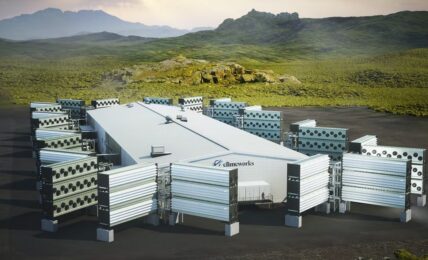By Donavan Hornsby, Benchmark Digital Partners
Tell me if this sounds familiar: a company makes a grand pronouncement that it will be carbon neutral by 2030. Or perhaps 2035 or 2050. There is initial optimism. The company releases some plans, sets up a working group, and maybe gets some early initiatives underway. The Chief Technology Officer frames this as an opportunity for “digital transformation.”
Then the whole thing fizzles. The company doesn’t hit benchmarks for decarbonization. After meeting every two weeks to start, the working group doesn’t meet for months. Like 78% of digital transformations, this digital transformation fails to meet business objectives. The initiative doesn’t implode. It just deflates.
This failure is not for lack of good intentions. It’s because the initiative was built without foundation. The pronouncements came without the structure, measurement, and culture necessary to sustain the effort required to achieve Environmental, Social, and Governance (ESG) objectives.
With apologies to Field of Dreams, C-suites must remember the phrase is “if you build it, sustainability will come,” not “if you say it, sustainability will come.”
C-suites must build a sustainability culture if they are to achieve ESG objectives. They must rigorously measure progress, set benchmarks for success, and create incentives and disincentives. Once a rigorous structure is in place, going carbon neutral is no longer “just another thing to do,” or ancillary to a company’s core mission. It is a core mission itself.
Commitments to core measures do not falter after the initial burst of enthusiasm. They carry on. With long-term commitment, companies can succeed.
So what does a rigorous sustainability culture look like?
It starts with data. That which gets measured gets done, and, more to the point, that which is verifiably successful gets done over and over again.
Let’s take the example of a commercial real estate (CRE) company that manages dozens of properties. In the CRE industry, net-zero carbon commitments are on the rise, and firms that invested in CRE companies on the back of such promises want to see results.
Data will allow that company to follow through. Building-level data can let them know which buildings, or even which floors, are responsible for outsized carbon emissions. The company can then make targeted fixes to offending buildings (doing everything from installing solar panels on the roof to limiting energy consumption through heat-resistant paint or better insulation) rather than institute enterprise-wide initiatives that may miss the mark. Better yet, they can see if the updates have actually fixed the problem.
If the updates worked, the company can celebrate the employee who led them and seek to replicate her results elsewhere. She becomes a guide for the company’s entire culture.
This brings us to incentives. With data collection in place, companies can measure results. As with any business initiative, that which gets incentivized gets prioritized. Accordingly, C-suites need to set up incentive structures based on measurable results so employees, customers and other stakeholders keep pushing towards sustainability goals.
Returning to the example of the commercial real estate sector, the granularity of the data generated by building energy analytics platforms can help end-users develop incentives for ESG program participation. For example, bifurcating the data on landlord and tenant consumption, as Vornado Realty Trust (VRT) does, can inform both property management and tenant engagement best practices, similar to tactics used by sustainable CRE leader Boston Properties, and enable “green lease” agreements that formalize ESG incentives for tenants.
VRT and Boston Properties, then, are setting a culture for both employees and tenants, empowering them to always improve their performance and, critically, giving them the incentive to do so. This is a system with staying power.
Finally, there is the shared connection to mission. In the early days of ESG investment, I vividly remember touring factories with front-line staff, picking their brains about where they saw inefficiencies or easy ways to minimize energy consumption and associated environmental impact. We then set about fixing those problems and collecting data on the improvements. Then, six months later, we could go to the front-line staffers and celebrate the tremendous impacts of their individual contributions. We connected people on the front lines with the mission of the organization while delivering concrete business value.
Building a long-term culture of sustainability will require C-suites to collect, and share, as many of these types of stories as possible. Employees must know that they have a seat at the table of innovation and in the shared commitment to that mission.
Then, and only then, should C-suites make grand pronouncements about emissions cuts. That, after all, is when they’ll be able to follow through, to make a commitment more than a short-term PR win.
A cynic may argue, of course, that the short-term PR win is the point. A CEO likely to leave his position in the next five years probably doesn’t care if the company fails to meet a target 18 years in the future. Yet the climate crisis is so acute, the chances of catastrophe so high, that we simply cannot give into cynicism. We must make an earnest effort to make every company’s climate commitment a real commitment. We must assume a good faith effort and put in place systems to follow through.
Building culture takes work and resources. Yet as Field of Dreams makes clear, the magic is not in saying something, but in building it. Companies that do their part to combat the climate crisis must take this lesson to heart.
Hornsby is the Corporate Development and Strategy Officer at Benchmark Digital Partners.
The post Guest Post – If You Build It, Sustainability Will Come: Measurement and the Sustainability Culture appeared first on ESG Today.


